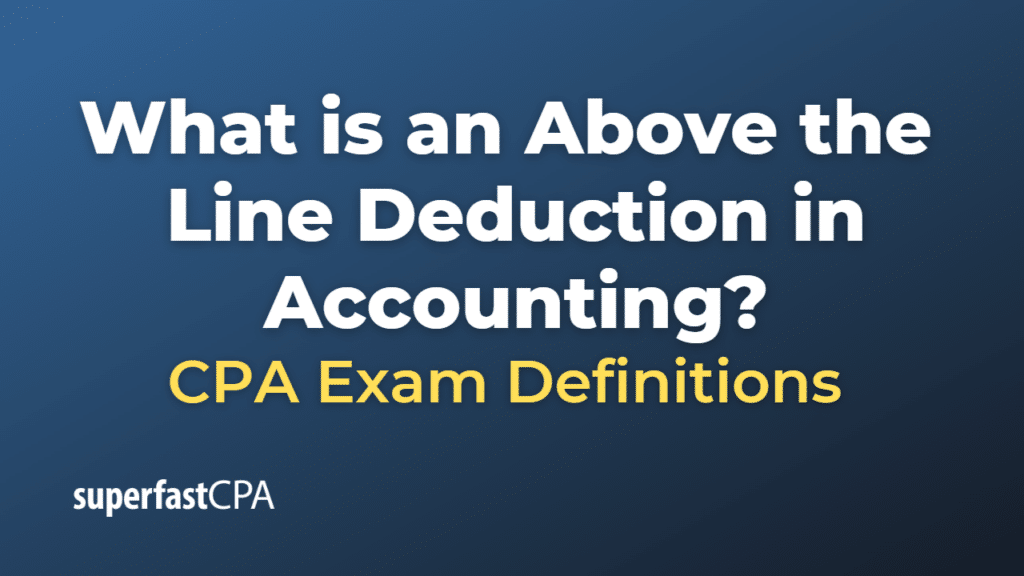Above the Line Deduction in Accounting
In the context of individual income tax accounting, an “above-the-line deduction” refers to specific deductions that taxpayers can take to reduce their adjusted gross income (AGI) before calculating their taxable income. These deductions are called “above-the-line” because they are deducted from a taxpayer’s gross income above the line that separates gross income and adjusted gross income on the tax return form. In the United States, these deductions are reported on IRS Form 1040 or 1040-SR.
Above-the-line deductions are available to all taxpayers, regardless of whether they choose to itemize their deductions or take the standard deduction. Some common examples of above-the-line deductions include:
- Educator expenses: Qualified expenses paid by teachers, instructors, or other educators for supplies, materials, and other items used in their classroom.
- Health savings account (HSA) contributions: Contributions made to a qualifying HSA by the taxpayer or their employer.
- IRA contributions: Contributions made to a traditional Individual Retirement Account (IRA) within the allowable limits.
- Student loan interest: Interest paid on qualified student loans, up to a certain limit.
- Alimony payments: Alimony payments made under a divorce or separation agreement that meets specific requirements.
- Self-employed deductions: Expenses incurred by self-employed individuals for health insurance premiums, retirement plan contributions, and half of the self-employment tax.
Above-the-line deductions are beneficial because they directly reduce a taxpayer’s adjusted gross income, which is used to calculate various tax credits, deductions, and exemptions. By reducing AGI, taxpayers may become eligible for additional tax benefits and potentially lower their overall tax liability.
Example of an Above the Line Deduction
Let’s consider a hypothetical example of a taxpayer named John, who is a single individual with no dependents. In the tax year, John has the following financial information:
- Gross income: $60,000 (includes salary and other income)
- Educator expenses: $500 (John is a teacher and has spent money on classroom supplies)
- IRA contribution: $3,000
- Student loan interest: $1,500
To calculate John’s adjusted gross income (AGI), we’ll consider the above-the-line deductions:
AGI = Gross income – Educator expenses – IRA contribution – Student loan interest AGI = $60,000 – $500 – $3,000 – $1,500 AGI = $55,000
John’s adjusted gross income is now $55,000 after applying the above-the-line deductions. This reduced AGI may affect John’s eligibility for certain tax credits and deductions, potentially lowering his overall tax liability.
Now, John needs to decide whether to itemize deductions or take the standard deduction. For this example, let’s assume that John chooses to take the standard deduction, which is $12,550 for a single individual in the tax year 2021.
Taxable income = AGI – Standard deduction Taxable income = $55,000 – $12,550 Taxable income = $42,450
By using the above-the-line deductions, John has reduced his adjusted gross income and taxable income, which will likely result in a lower overall tax liability.













